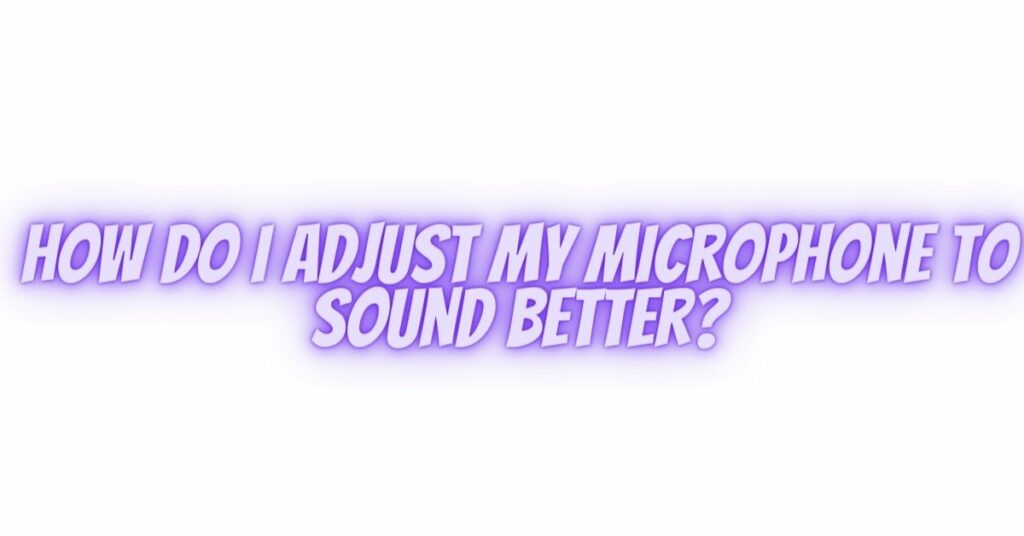Whether you’re recording a podcast, conducting online meetings, or streaming your favorite games, ensuring that your microphone captures the best sound quality is essential. Adjusting your microphone properly can make a significant difference in the clarity and fidelity of your audio. In this comprehensive guide, we’ll explore various methods to help you fine-tune your microphone for optimal performance.
1. Select the Right Microphone:
The first step in improving your microphone’s sound quality is choosing the right microphone for your specific needs. Consider the following factors:
- Microphone Type: Condenser, dynamic, ribbon, or USB microphones have different characteristics and applications. Condenser microphones are great for studio recordings, while dynamic microphones are better for live performances.
- Directional Pattern: Different microphones have various directional patterns, such as cardioid, omnidirectional, and bidirectional. Choose one that suits your recording environment and requirements.
2. Microphone Placement:
Proper microphone placement is crucial for good sound quality. Position your microphone correctly for the best results:
- Distance: Maintain an appropriate distance between your mouth and the microphone, typically around 6 to 8 inches. Adjust this distance as needed to find the right balance between capturing your voice and avoiding distortion.
- Angle: Aim the microphone slightly off-center from your mouth to minimize plosive sounds (popping noises caused by forceful exhalation). Using a pop filter can also help reduce plosives.
3. Adjust Microphone Gain:
The microphone gain, also known as sensitivity or input level, determines how loud your recorded audio will be. Setting it too high can lead to distortion, while setting it too low may result in barely audible recordings. Start with a moderate gain setting and adjust as needed to capture clear sound without clipping.
4. Use Pop Filters:
Pop filters are essential accessories for improving microphone sound quality. They help reduce plosive sounds and sibilance, resulting in cleaner and more natural audio.
5. Monitor Your Audio:
Wearing closed-back headphones allows you to monitor your audio in real-time. Listen for any unwanted background noise, distortion, or other issues. This enables you to make adjustments on the fly for better recording quality.
6. Minimize Background Noise:
To achieve the best sound quality, record in a quiet environment to reduce background noise. Consider using acoustic treatment like foam panels, bass traps, or diffusers to control room reflections and improve the acoustic environment.
7. Use Windshields:
If you’re recording in outdoor or breezy environments, consider using foam windshields or furry windjammers to protect your microphone from wind noise and light breezes.
8. Post-Processing:
After recording, you can further enhance your audio quality by using post-processing tools like equalization (EQ), compression, and noise reduction in audio editing software. These tools allow you to fine-tune your recordings and eliminate unwanted sounds.
9. Regular Maintenance:
Keep your microphone clean and free of dust and debris. Dust and dirt on the microphone diaphragm can degrade sound quality. Use a soft brush or microfiber cloth to clean the microphone and its accessories.
10. Experiment and Learn:
Achieving the best microphone sound quality is a combination of knowledge, practice, and experimentation. As you gain experience, you’ll develop an ear for what works best in different recording situations.
By following these steps and consistently working on improving your microphone setup, you can enhance your sound quality and create professional-sounding audio for your recordings, broadcasts, and virtual meetings.


